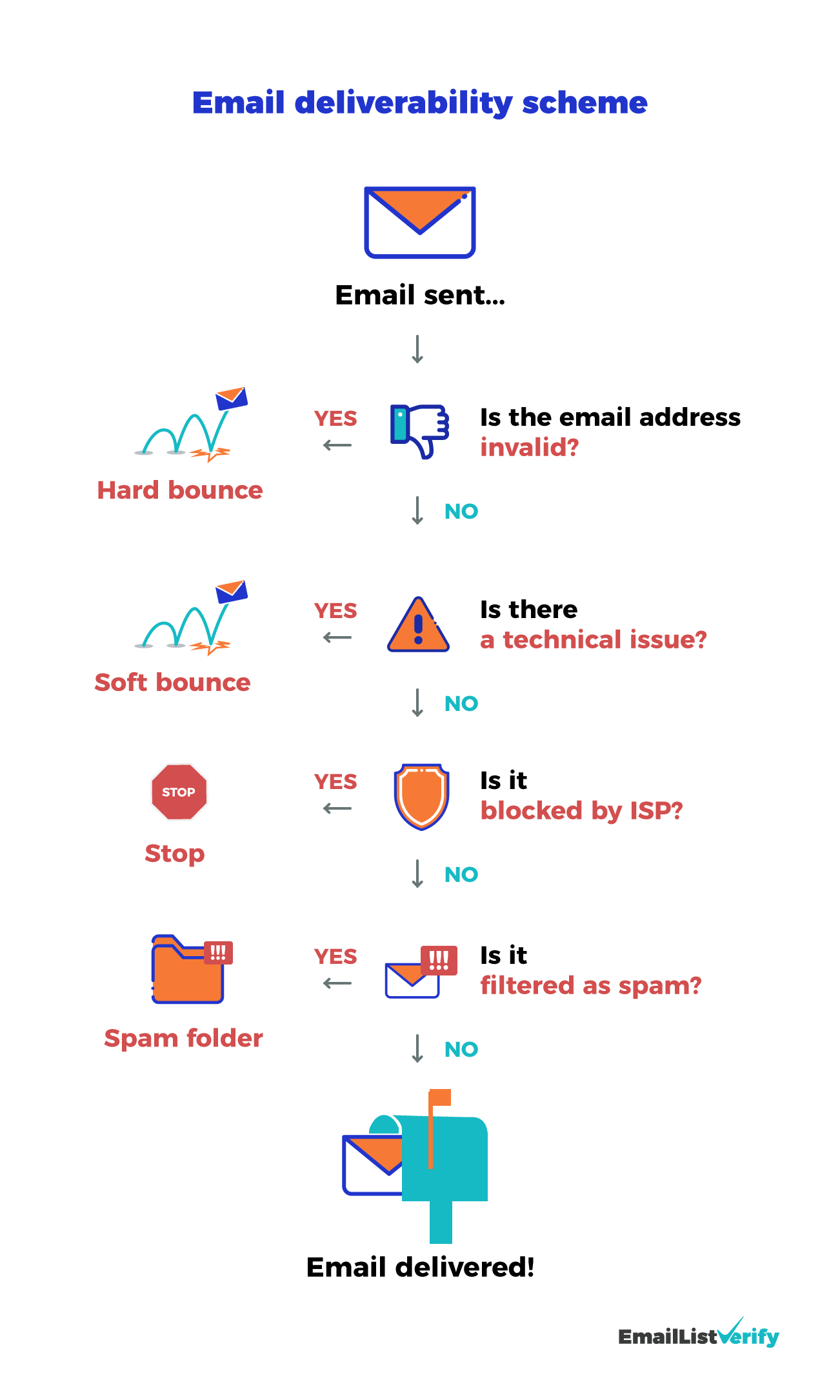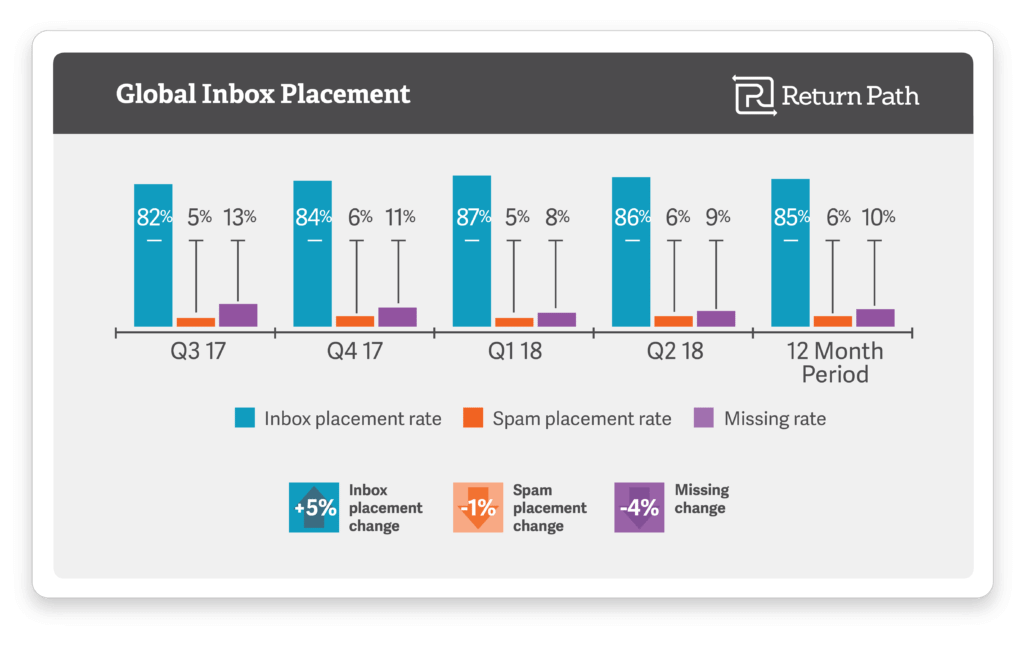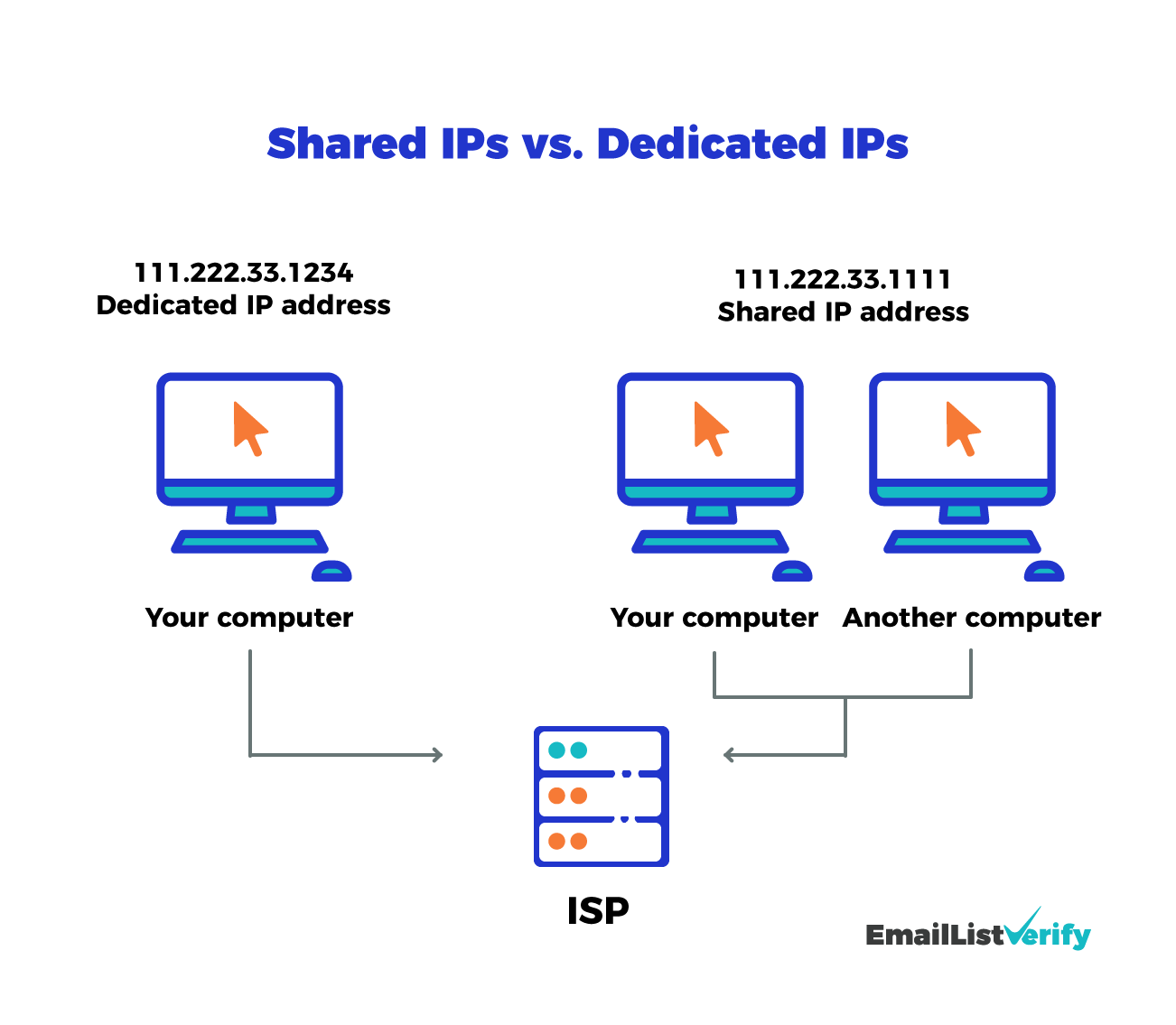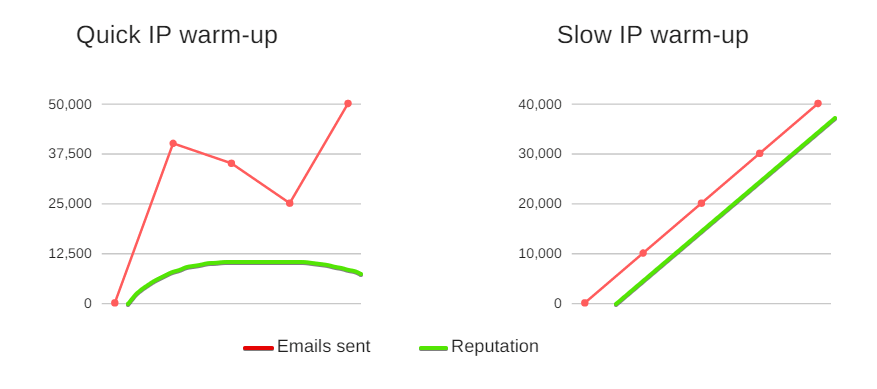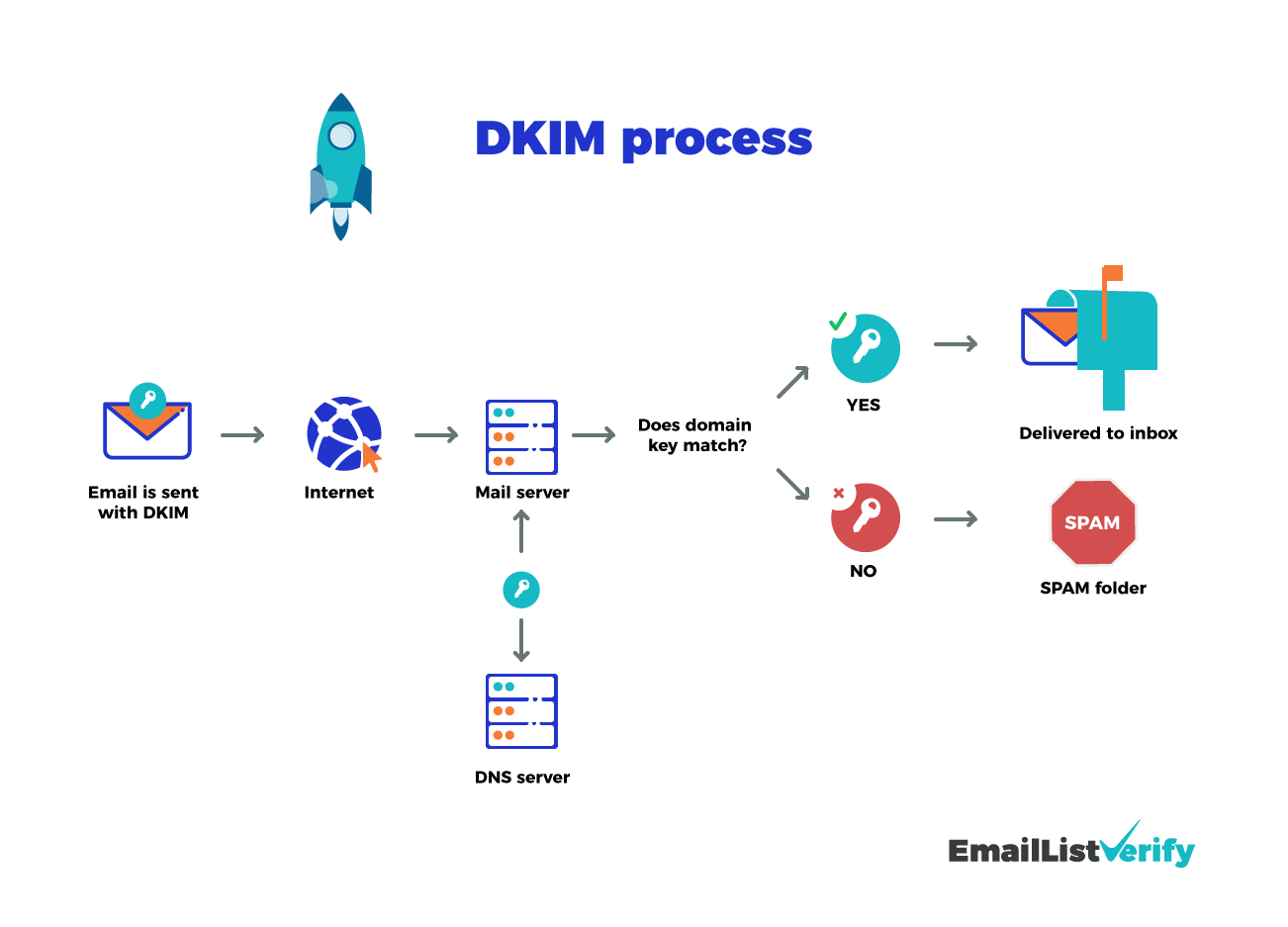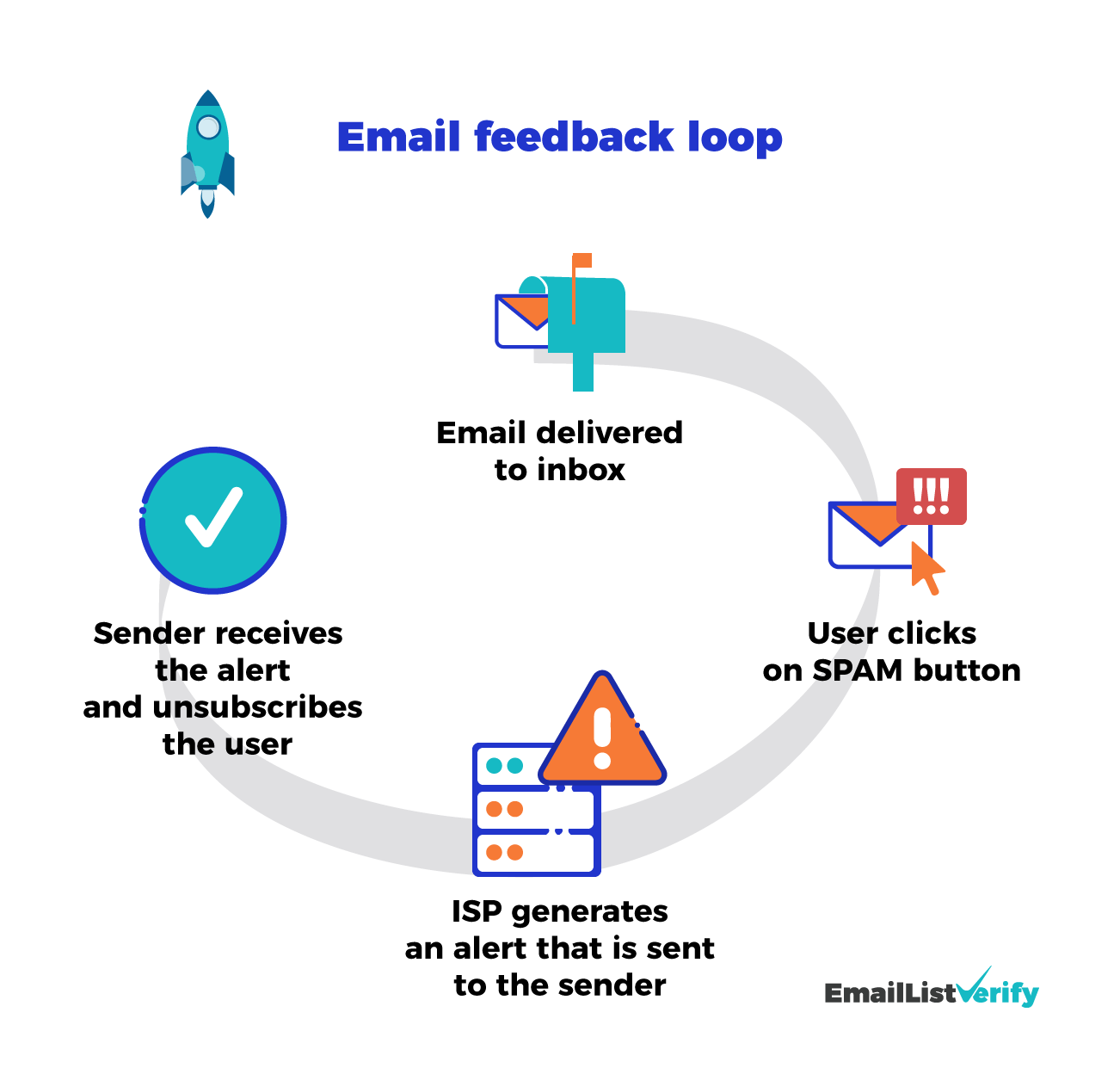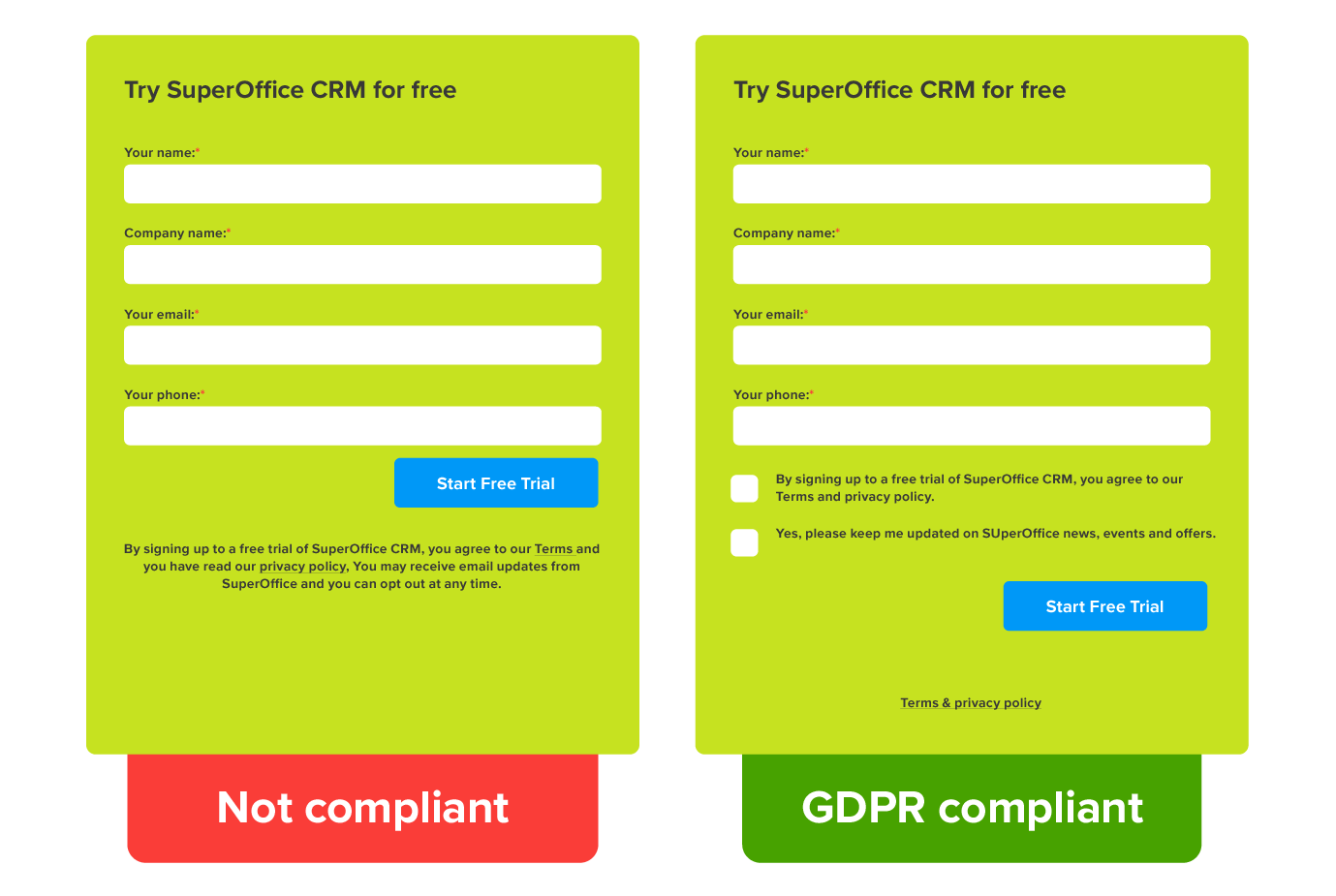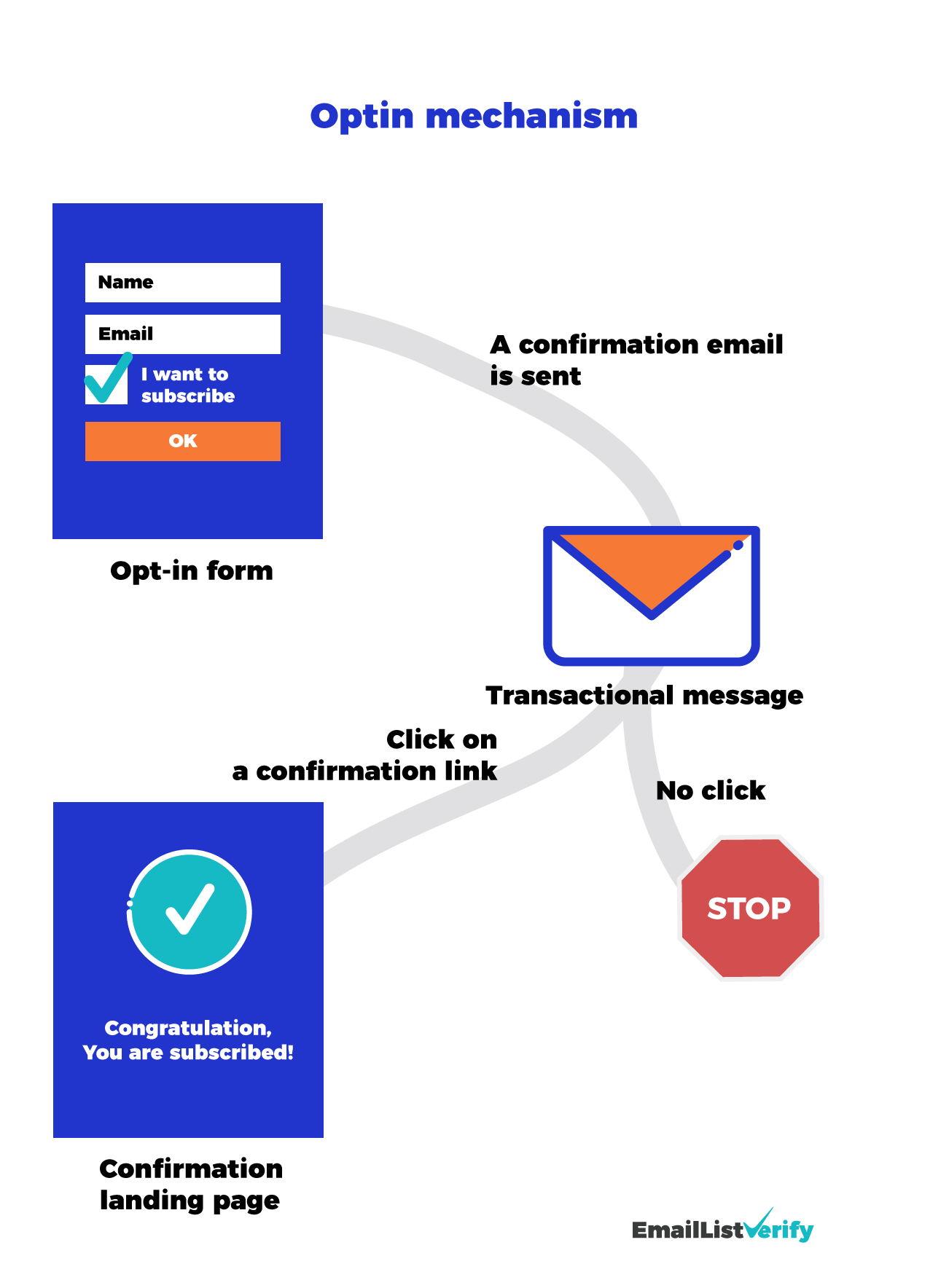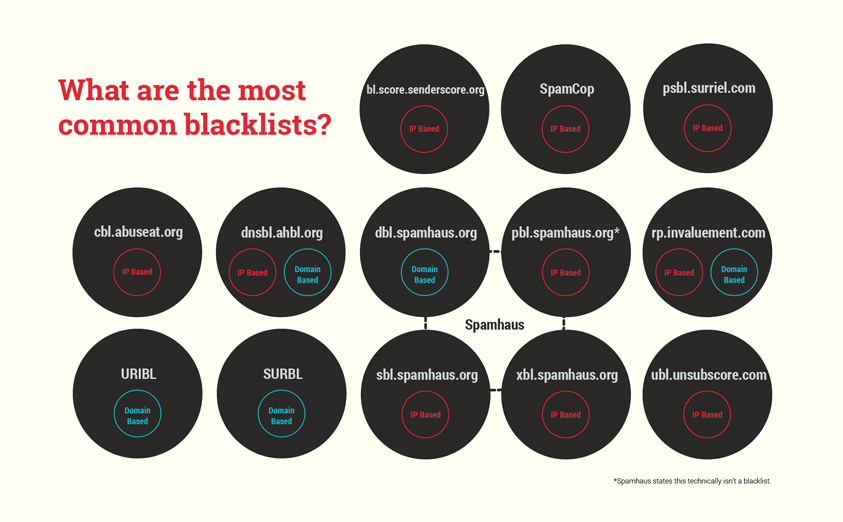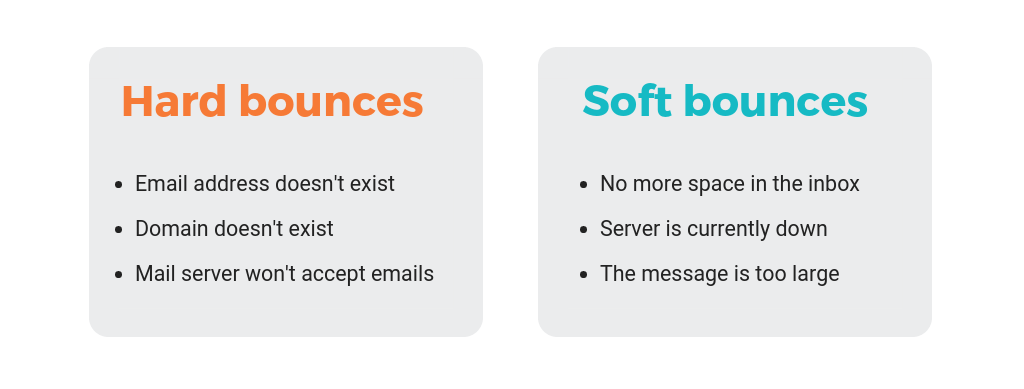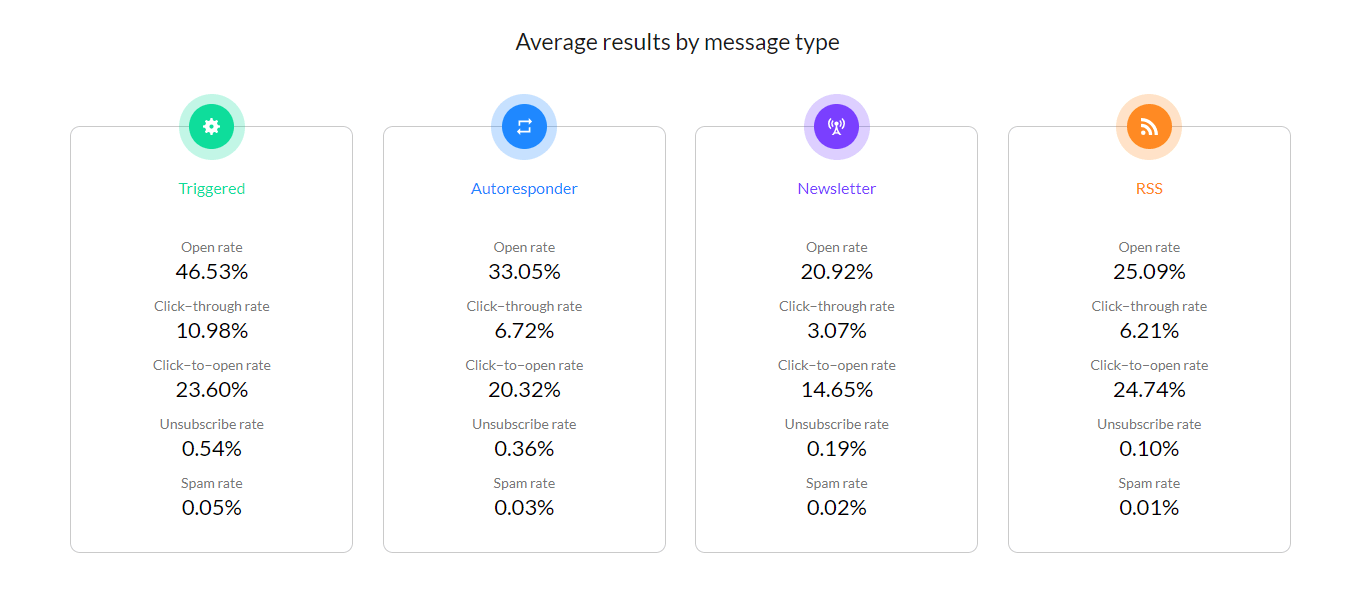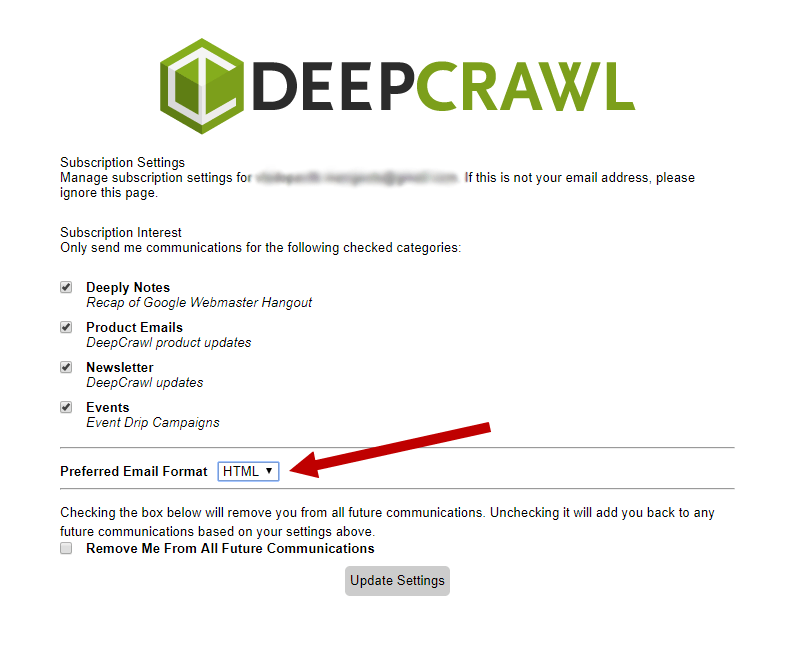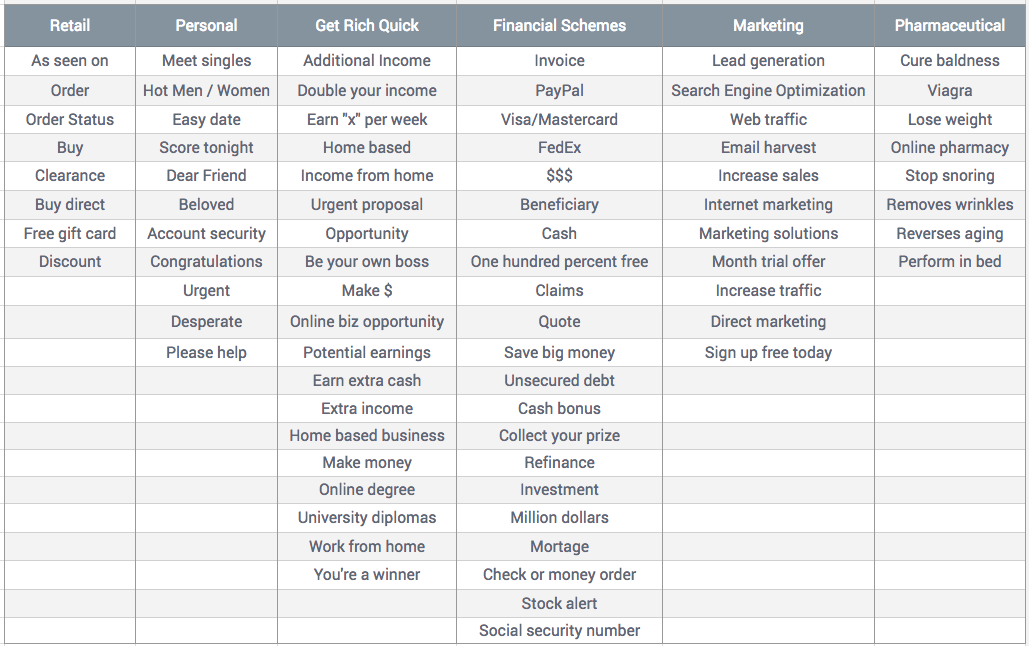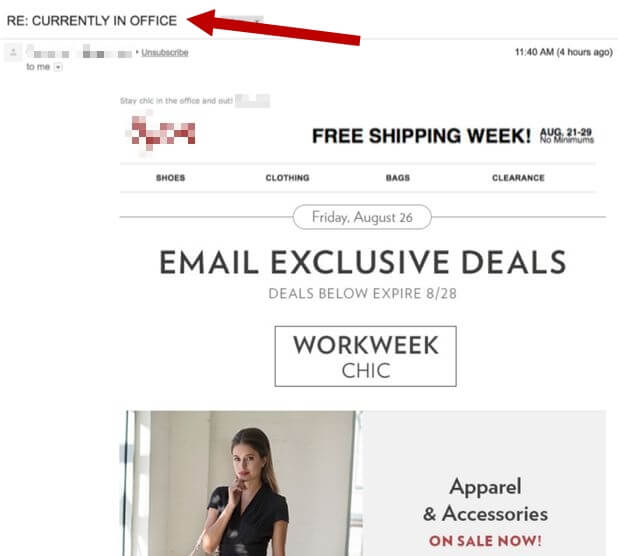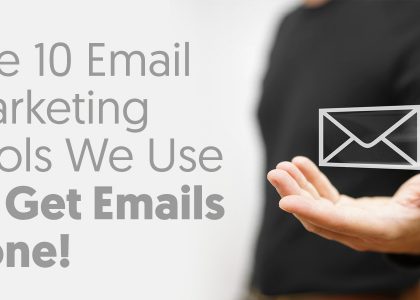The Ultimate Guide to Email Deliverability
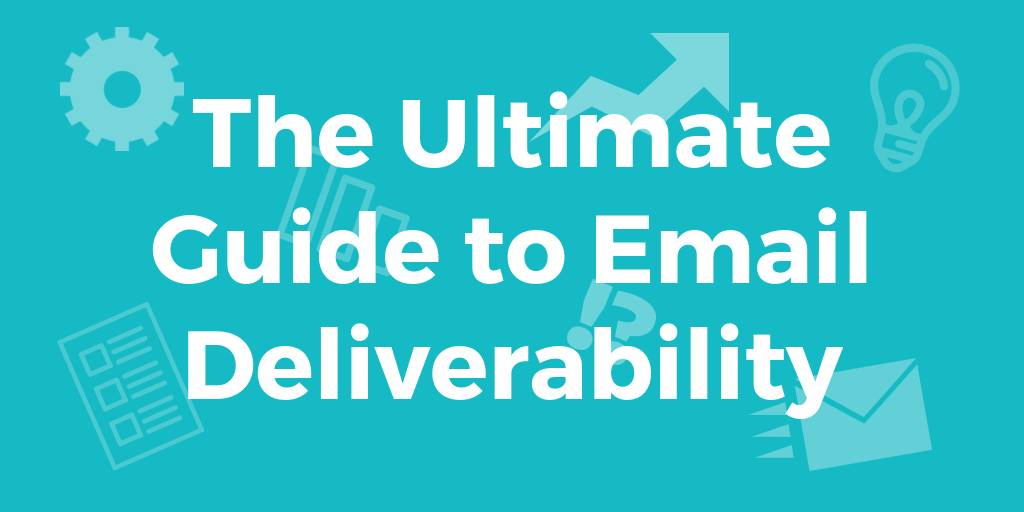
31 Best Practices to Improve Your Email Deliverability and Reach the Inbox
Just like with classic mail, there are many things that can go wrong when you try to send an email to someone.
Besides having a proper email infrastructure, senders have to be very careful about many other things and stick to the best practices regarding the sender’s behavior. Otherwise, their email won’t be delivered or they may be blocked by internet service providers.
Table of contents
In this ultimate guide, we will look at all the aspects that influence deliverability and cover 30 tips and best practices to stick to if you want to reach the inbox.
Introduction
What is email deliverability?
Email deliverability can be understood as a likelihood that your email will be delivered to the inbox of your recipient. There are many aspects that influence whether the email will be delivered or not.
Email deliverability is closely connected to the sender reputation. If your sender behavior is in accordance with the general rules and you have proper infrastructure, your sender score will be high and your deliverability will thrive.
What is a Good Email Deliverability Rate?
A good email deliverability rate is generally considered to be around 95% or higher. This means that at least 95% of the emails you send should reach the inbox of your recipients without being marked as spam, or bouncing back.
Marketing deliverability rate
In the marketing industry, where mass emails are often sent, a rate of 95% to 98% is considered good. Anything below that may indicate issues with your email campaign or sender reputation. It’s crucial to closely monitor your metrics in this sector, as poor deliverability can seriously impact marketing outcomes.
SaaS deliverability rate
For Software as a Service (SaaS) companies, a deliverability rate of above 95% is also ideal. Because email communications often include transactional emails, such as confirmations or notifications, it’s essential for these to reach the inbox to provide the expected user experience.
What Are Soft & Hard Bounces?
Soft and hard bounces refer to the failure of an email to be delivered. While both indicate deliverability issues, they differ in their nature and implications.
Soft bounce
This is a temporary failure in delivering the email. Reasons could be a full mailbox, a server timeout, or other short-term issues. Most email services will attempt to resend the email after a soft bounce.
Hard bounce
This is a permanent failure to deliver the email, often due to invalid email addresses or blocked domains. Hard bounces are detrimental to your sender’s reputation, and these addresses should be removed from your mailing list immediately.
What Affects Email Deliverability & How to Track It
Several factors can affect email deliverability:
- Sender reputation: Internet service providers consider your sender score when determining if your email should be delivered.
- Email content: Spammers often use certain keywords or phrases, and if your email contains these, it may be flagged.
- Recipient engagement: The more engagement your emails get (opens, clicks), the better your deliverability will generally be.
To track these elements, you can use analytics and metrics provided by your email service provider. You should keep an eye on rates like the bounce rate, open rate, and click-through rate, among others.
Email Deliverability Tools To Use
To optimize your email deliverability, you may find these tools useful:
Email verification services
Clean your email list by removing invalid addresses with EmailListVerify and increase the deliverability of your emails.
Inbox warm-up services
Tools like WarmupInbox help you warm up your email addresses to improve your sender reputation.
SMTP relay services
These act as middlemen between your email server and the recipient’s email server, ensuring your emails are delivered efficiently.
Analytics tool
This type of service will give you insights into your campaigns, providing data on open rates, click-through rates, and bounce rates, helping you to fine-tune your strategy.
When you use tools like these, you can better your chances of having a high deliverability rate, which greatly helps your emails reach your intended audience and stay out of the spam folder.
Why should you care?
Email marketing has a huge potential and offers great possibilities to be creative when reaching your customers (or potential customers).
But in order to reach those people with your top-notch email campaign, your email needs to land in their inbox.
The global inbox placement rate is around 85%, which means that about 15% of the emails worldwide never reach the inbox of their recipients.
Source: ReturnPath
Surely, you don’t want to waste your money and time spent on email marketing only to end up blocked, blacklisted or filtered as spam. The issue is, that if you practice poor email hygiene and ignore the best practices, it may happen faster than you think.
Undelivered marketing email means lost opportunity. Undelivered transactional email means disappointed or angry customer.
It’s all about sender reputation
When it comes to email deliverability, it all revolves around the sender reputation. Let’s take a look at what it is, how it influences your deliverability and most importantly, what to do to keep it at a satisfactory level.
The internet service providers (ISPs – in the context of this guide, we mean email providers such as Gmail, Yahoo, Hotmail, etc.) collect data about your sending behavior and process them to assign you with a so-called sender score, also known as sender reputation.
There are two main basic types of a sender reputation:
- IP reputation
- domain reputation
The main difference between these two is that the former depends on your sending IP address, while the latter is bound to your sending domain.
IP reputation
The “Internet Protocol” address is a string of numbers that is a unique identifier for the device you use to send email. Internet service providers supply one to every device on their network in order to accurately route user requests.
There are two basic types: shared IP address or dedicated IP address.
A shared IP address simply means that more companies use the same IP address, so your reputation depends also on the behavior of other users.
Domain reputation
Domain reputation is becoming more and more popular way of establishing the sender score. It doesn’t depend solely on the IP address, but it considers the domain too.
This means that the reputation is bound to your brand and stays with you even if you change the IP address. It is a great thing if you have a good reputation (you don’t have to rebuild your reputation from scratch) but it also means that it is much harder to get rid of a bad sender reputation.
There are numerous factors that influence your reputation. As an email marketer, it’s your job to understand the different elements ISPs use to calculate your sender score and recognize if and when your organization suffers the effects of a poor email reputation.
Infrastructure
Without proper infrastructure, your email marketing will fail no matter how great campaign you have prepared. In the following tips, we cover the essential best practices when it comes to the infrastructure and authentication of your emails.
Although the technical aspects of email delivery may seem complicated at first, most of the settings need to be done only once. Also, some aspects are probably already covered by your email delivery service.
1. Use dedicated IP address
Always keep in mind that if you share the sending IP address with the others, their behavior may influence your deliverability too.
If you do not send thousands of emails monthly, it is not a big deal if you use a shared IP address, as it is much less expensive. If, however, you rely on email marketing heavily, you should invest in a dedicated IP address to make sure there are no other users who could negatively influence your reputation.
2. Use different IP addresses for different email types
Another thing you might consider is to set separate IP addresses for your marketing emails and transactional emails.
This is a best practice to make sure that your marketing campaigns won’t influence the deliverability of the essential emails such as password recovery or purchase confirmation.
3. Don’t change your IP address
If you have deliverability issues, the first thing that probably comes to your mind is to change the sending IP address to start again with a clean slate.
However, it may not be a good idea – this kind of behavior is very suspicious and it may not solve your problem at all. Since switching IPs is a common tactic used by spammers, new IPs are always treated with caution. Spam filters always consider the age of the IP as well as the sending permanence.
4. Warm-up your IP address
If you need to change your IP address (or you start with a new one), make sure to warm it up first. This means that you don’t start sending large volumes of emails from the start. Instead, you gradually increase the number of emails in order to establish the initial reputation.
Source: GlockApps
Warm-up is usually not necessary if you use a shared IP address.
5. Secure your servers with TLS
Transport Layer Security is a type of encryption that is applied to the email to protect it from being read by unwanted party during the process of sending (from the moment it leaves the sender until it is received).
Some email servers may prefer the TLS-encrypted emails, so it is always good to have this protocol enabled in order to maximize your deliverability.
6. Authenticate your email
Email authentication is a process of improving the delivery and proving the credibility of emails by implementing protocols that verify the identity of the sending domain.
There are three fundamental protocols that serve to determine who you are – SPF, DKIM, DMARC. They function as gatekeepers who identify you and decide whether you are a legitimate sender.
Sender Policy Framework (SPF) is a DNS record that informs the provider which IP addresses are allowed to send from your domain.
Domain Keys Identified Mail (DKIM) is an encryption method ensuring that the sent and received message is the same, thus preventing the stealing of the identity.
Domain-based Message Authentication, Reporting & Conformance (DMARC) record indicates the presence of SPF and DKIM protocols and tells the recipient what to do if these two authentication methods fails. It reduces the exposure to harmful an fraudulent messages.
7. Subscribe to feedback loops (FBL)
This rule is pretty simple and obvious – do not send emails to those who marked you as spam. If somebody marks your message as spam or trash and you send him another email anyway, your reputation score may suffer considerably.
Most internet service providers offer a service called feedback loop (FBL) that will let you know if your email was marked as spam. Once you are alerted, you should remove the contact from your mailing list immediately. Most mailing services (like SendGrid, MailChimp or Zoho) do this automatically for you so you don’t have to manually remove the contacts.
8. Set up postmaster@ and abuse@ addresses
Having these two role accounts is a best practice and a requirement by some internet service providers. They are used to receive abuse complaints so you should check them regularly and resolve all the issues as soon as possible.
9. Use domain that is able to receive email
Your sending domain should be able to receive emails, otherwise, the ISP may automatically block your email. Therefore, don’t forget to have a valid MX record associated with the domain.
Anybody getting an email from you should be able to reply to the same email address. Besides, having a “no-reply” address may evoke an arrogant attitude – “We want you to hear from us, but we don’t want to hear from you”.
Sending behavior
10. Never purchase emails
Purchasing email lists is a bad idea. People on purchased lists are more likely to mark you as spam and damage your reputation. Spam complaints are responsible for up to 20% of email deliverability issues. Also, purchased lists are full of spam traps.
Not to mention the fact that these people are simply not interested in your product and the engagement level is very poor. There are many better ways how to spend your money…
An example of a service selling email lists. Avoid them like a plague.
11. Always have consent
Even if the email address is not purchased but given by its owner, make sure everyone you mail to is happy to receive your messages.
If somebody gives you an email to register to your service, it doesn’t mean he is interested in your monthly newsletter. The same applies to giveaways or lead magnets.
Every single subscriber on your list should have given you explicit permission to email them the specific type of email.
Instead, employ ethical email list building strategies. It is better to have a handful of happy recipients that thousands of people who are not interested into your marketing emails.
GDPR
In 2018, a new General Data Protection Regulation (GDPR) came into force in the European Union. It applies to all businesses in the EU (or companies doing business with the people in the EU) and definies how personal data can be handled and used.
When it comes to email marketing, one of the key requirements of GDPR is to have clear consent from every contact that ends up in your database.
An example of a GDPR compliant email form. Source: SuperOffice
12. Don’t be afraid of unsubscribes
As we mentioned in the previous point, quality is much more important than quantity when it comes to mailing lists. If someone doesn’t want to receive your emails anymore, make it as easy as possible for them to unsubscribe – otherwise, they will use other options (junk, spam folder).
A typical unsubscribe link at the bottom of the email
The best practice is to have an unsubscribe button at the bottom of every marketing email you send. Do not require login, do not force the contact to fill in a lengthy form explaining why they don’t want to hear from you anymore (or at least, make sure the form is optional).
If someone doesn’t want your emails, you shouldn’t want to have them on your list. An easy option to unsubscribe is good both for you and user.
13. Warm up your inbox
Email warmup is different from IP warmup as it focuses on single inbox rather than the whole IP address. It is especially useful for cold email marketing that tends to cause deliverability issues over time.
This process is typically done with newly created inboxes but also benefits older email addresses that are used for cold emailing.
14. Use double opt-in
To make sure you are really sending only to those who are interested in your emails, you can go even further and implement a double opt-in. It is considered a best practice in email marketing to prevent from sending to people who did not give a clear permission – e.g. if person A signs up person B for a marketing newsletter on a certain website.
Double opt-in simply means a second confirmation of the email preference that is send to the recipient’s inbox and has to be confirmed. Only after this action, the contact will be added to the mailing list.
15. Be consistent
It is important to be consistent and stick to the sending schedule, both regarding the volume and frequency.
Create a plan and stick to it. The best practice is to send one or two emails per week. If you select a certain time, people will
Being inactive for a month and then start sending 3-4 email campaigns a week is very suspicious and may lead to a lower sender score given by the ISPs. The same applies to rapid spikes in the volume of contacts in your sending list.
16. Be careful about spam complaints
Being actively marked as spam by the receiver of the email is one of the strongest signals for ISPs to lower your sender reputation. One of the reasons for being often marked as spam bay be an absence of the unsubscribe link.
A Spam button in Gmail
You should check the spam complaint statistics regularly and keep the spam complaints low. Of course, it is very hard to keep the rate at 0% but in general, try to keep the spam rate below 0,1% (for example, a spam complaint rate higher than 0.08% already affects your deliverability in Gmail).
17. Avoid being blacklisted
There are hundreds of publicly available blacklists that list all the email addresses that are “confirmed” spammers. Most often, the are based on the spam complaints and spam traps hits.
Some of the blacklists only last for a day or two. Other custom blacklists have longer bans and ISPs check them as one of the ways to find unwanted senders. You can use our blacklist checker tool to see whether your email address is on any of them.
Source: ReturnPath
If you’re on a blacklist, think about the reasons why it happened and fix the issue. Then contact the list owner with the request to delist you.
Of course, the best strategy is prevention. Avoid being blacklisted by following the best practices stated in this email deliverability guide.
18. Avoid spam traps
A spam trap is an inactive email address owned by the ISPs. They use these accounts to catch and punish malicious senders as they are sure the email address could not have been obtained in a regular, legitimate way.
Sending an email to a spam trap is usually a one-way ticket to a blacklist. You are very unlikely to get one into your email list if you stick to the ethical ways of getting email contacts. Again, never purchase or harvest emails.
19. Keep the bounce rates low
An email bounce happens when an email can’t be delivered to an email address.
A hard bounce is a permanent error, meaning that email is not good for the indefinite future. You should remove hard bounce email from your list immediately.
A soft bounce is a temporary error. Some of these can be saved and re-added to your campaign. However, don’t resend to soft bounces immediately. Wait for one or two days until those full mailboxes are cleaned and those faulty servers are repaired.
If an email soft bounces too many times, you should treat it as a hard bounce and delete it from your active list.
20. Keep an eye on the engagement
The engagement level of your email campaigns plays a role in your reputation as well. ISPs want to see proof that the messages you send are enjoyed by the people receiving them.
To do this effectively, you must have a deep understanding of your list and what they’re looking to get out of your emails. You also must do your best to provide personalized experience for each of your subscribers.
A poor reputation most noticeably manifests itself in low open rates. Take some time and analyze your email data.
Source: GetResponse
If your open rate is significantly below the general average of (usually around 20% – 25%) or steadily declining over your last few campaigns, there’s a good chance your sender score has been damaged and you need to change your sending practices.
21. Get rid of inactive subscribers and role accounts
If someone doesn’t open a single email from your for a period of several months or even more than a year, they are probably not interested in your emails or the email address is no longer used.
Set a reasonable time period and clean your lists from inactive contacts to make sure you keep your engagement levels high. The same applies to role accounts such as [email protected] or fake emails such as [email protected].
22. Verify your list
An email verification tool will help you to find and get rid of all spam traps, hard bounces, typos and disposable or catch-all emails.
Studies show that the average email list consists of 60% of dead leads due to subscribers changing occupations, email providers and more. It means that, for most companies, 6 out 10 subscribers will never even receive the emails they send to them.
While you have no control over when a subscriber changes their email address, you can control whether you keep emailing them or not.
By using an email verification service like Email List Verify, you can quickly and easily purge these dead addresses from your mailing list so that you receive less bounces and your reputation isn’t constantly being damaged.
23. Be careful with the re-engagement campaigns
The re-engagement campaign is an email campaign in which you try to win back the contacts that were once active but become unintersted over time.
These campaigns are rsiky – they can have a high spam complaint ratio and very low engagement. It is a good practice to use a separate IP address for these type of campaigns so that their failure won’t hurt your primary sender score.
Content
Another important factor that influences your reputation score is the content of the emails.
Creating compelling content is a fantastic way to improve the engagement, but it is not the only thing you need to focus on. Emails with poor content, bad formatting, and other signs of spammy behavior can damage your deliverability too.
Check the following tips to stop your emails from being filtered by ISPs.
24. Format your email properly
There is an old debate of plain-text emails vs. HTML emails. Both have some advantages and disadvantages, but people tend to prefer nice, formatted emails with images. HTML emails won’t hurt your reputation, but you must make sure the code is clean. Broken HTML tags are easily detected by ISPs and will hurt your deliverability.
As a compromise, you should offer a plain text version of every HTML message you send. This will ensure that email providers like Gmail and Outlook don’t automatically place your message in the spam folder…
An example of email preference settings with the option to select email format
25. Balance the image and text ratio
Emails with too many images can damage your email deliverability. First off, some email clients can’t read HTML or images in emails. If the prospect can’t understand your email, you’re not going to convert.
Also, emails solely comprised of one big image are suspicious to ISPs. Many marketers use image-text to try and dodge the spam filter. However, the ISPs have caught on.
26. Segment and personalize the emails
We already mentioned that it is good to segment the emails into marketing and transactional/administrative emails and use different IP addresses for them.
However, you can take the email segmentation even further. You can segment your contacts based on many other aspects (gender, age, engagement). Divide your list into smaller segments and add a touch of personalization to your emails.
This will increase the open rates of your emails and you won’t send exactly the same message to all your contacts, which is something that may alert ISPs, if done in large scale.
27. Limit risky words
Spam filters analyze your content. Limit risky words, such as “free”, “lowest price” or “buy”. On that note, don’t make misleading claims either. Under no circumstances should the subject line state that a prize has been won, only for the content of the email to state the conditions for redeeming the prize.
Here is a list of risky keywords you should avoid using in your emails collected by Mailjet:
28. Link to quality sites
Linking to a shady site is one of the fastest ways to be filtered as spam. If you want to link to an external source, make sure to link to a website that has a good reputation.
Another important thing to consider is the number of links in your email message. Too many links may look suspicious.
29. Don’t use link shorteners
Don’t use link shorteners in your emails. They are great for sites like Twitter, where character count is of importance. However, in email messages, they may lower your sender score as are often used by spammers to hide shady links.
30. Avoid deceptive subject lines
Open rate is an important metric, but you should not try to improve it artificially. If your subject line is “100% Free $50 Visa Gift Card”, you’re going to get a lot of opens. But if you don’t satisfy the reader, you’re going to get marked as spam. A strong offer is useless if you betray expectations and trust.
An example of a deceptive subject line trying to evoke the impression of an ongoing conversation
31. Avoid excessive punctuation
Using caps in your email is like shouting. It’s bad practice and it irritates people. It’s also not recommended to use excessive punctuation, such as multiple exclamation marks.
